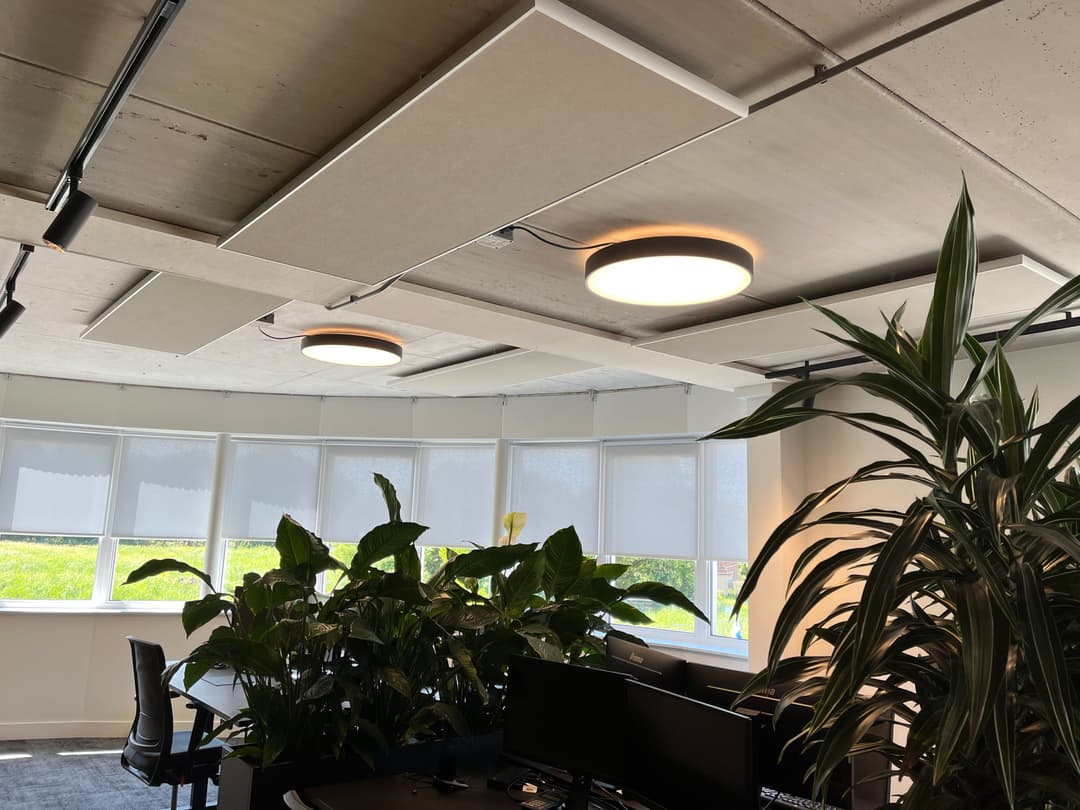The impact of poor acoustics in the office
Do you or your employees find office noise irritating? Have you noticed that your concentration, as well as that of your employees, diminishes more quickly during office hours? Do you and your employees feel exhausted after a day at the office and assume this is normal? If so, you’re mistaken—because it doesn't have to be this way at all
Employers often overlook the acoustics in offices. However, this is crucial, as it greatly impacts the wellbeing and productivity of employees. Various studies have shown that the negative effects of poor acoustics are more significant than originally thought. Here are some key findings:
- Persistent disruptive noise causes an increase in adrenaline and the production of cortisol (stress hormone). This can potentially be a continuous source of tension for employees, negatively impacting their overall well-being and performance.
- After a disruption, it can take up to 25 minutes to return to the original tasks and an additional 8 minutes to regain the same level of concentration.
- In environments with higher noise levels (55-70dBA), accuracy on complex tasks decreases by 50%.
- People perform 16% better on memory tests and nearly 40% better on math tests in a quiet room compared to an open-plan office with 65 dB(A) background noise.
Now you know the negative effects of poor acoustics. Addressing these adverse effects also brings benefits. A good acoustic environment in the office leads to:
- Better concentration: A quiet environment promotes focus and concentration.
- Good speech intelligibility: Essential for effective communication in an office environment.
- Higher productivity: Reducing distractions contributes to a more efficient working environment.
- Healthier work environment: By reducing stress levels, the well-being of employees is promoted.
- More calmness: An environment with good acoustics contributes to the overall peace of mind of employees.
What causes poor acoustics?
Poor acoustics stem from various sound sources, both human and mechanical. Sound can be reflected, penetrate into adjacent spaces, scatter diffusely, or be absorbed. Understanding these processes is essential for finding effective solutions, and we are here to support you in this endeavour.
In office environments, speech intelligibility and speech privacy are crucial. Speech intelligibility is directly affected by sound reflections, and good sound absorption can reduce reverberation time, thereby improving communication.
Applying sound-absorbing solutions, particularly to reflective hard surfaces such as ceilings, has the most significant impact on reducing reverberation time. For speech privacy, sound levels and transmission are key factors, with barriers such as desk screens, dividers, or large furniture pieces playing a critical role in limiting sound transmission.
Investing in acoustics is investing in employees
As previously highlighted, investing in acoustics yields substantial benefits. It results in quieter spaces, improved concentration, and more effective communication. This creates a productive and healthy work environment for an organisation's most valuable asset: its people. Therefore, creating an office environment with good acoustics is an investment in the company’s future and the satisfaction of its staff.
Curious about the impact of acoustics on your office? Get in touch with us directly to receive personalised advice from one of our acoustic specialists. Together, we will find the perfect solution for your office environment!

